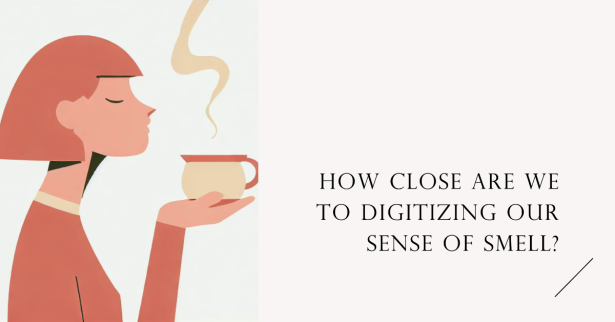For centuries, scientists have sought to unravel the mysteries of the sense of smell. This sensory system has perplexed researchers in fields from neuroscience to psychology due to its complex and idiosyncratic nature. While sights and sounds have successfully been digitized, transmitting scents electronically remains an elusive goal. But with new breakthroughs in machine learning detailed in Science, we may be edging closer.

The complexity stems from the sheer scope of human olfaction. Our noses can detect over one trillion distinct scents, far exceeding other senses. This versatility arises from hundreds of functional olfactory receptors that create unique activation patterns in the brain for each odor molecule. Even minute structural differences in chemicals trigger divergent perceptual experiences.
Prior attempts at digitization have struggled to capture this nuance. Early “smell synthesizers” relied on blending base scents from a small repertoire. But without precisely controlling airborne molecules, they couldn’t recreate most aromas. Like pixelated images, the results seemed crude and imprecise.
So what progress has been made? Researchers from the Monell Chemical Senses Center collaborated with startup Osmo to develop a machine learning model that matches odor molecules to semantic descriptions. This creates a multidimensional map linking molecular features to perceptual qualities.
The researchers trained the model on a dataset of over 5,000 known odorants. They then tested it against a panel of scent experts, having them describe and rate 400 novel molecules. Impressively, the model performed on par with the average human scorer. Even more remarkable was that it succeeded at tasks it wasn’t explicitly trained for, like judging odor intensity.
This shows the model effectively learned fundamental aspects of how scents activate our brains. By connecting language to chemical structures, it bridges the gap between airborne compounds and our sensory experience. This could allow translating neural signals during olfaction into specific odor recreations.
So are we on the cusp of digitizing smell? Not quite. Significant barriers remain for electronic transmission. The model still relies on descriptive prose rather than neural data. Its predictions frequently diverge from human assessments. Reproducing airborne scents electronically requires precision control over molecules. Existing devices have limited chemical palettes compared to biology. Noses also detect trace amounts far below what’s needed for machines.
Thus, while promising, we aren’t poised to digitize and transmit smells electronically yet. Doing so seamlessly will require enhancing model accuracy, incorporating neural inputs, vastly expanding chemical reproduction capabilities, and dramatically boosting sensitivity.
But each increment of progress intrigues. Perhaps one day we’ll text scents as easily as emojis. For now, the chaotic complexity of smell keeps our aromatic world firmly analog. Yet the latest breakthroughs suggest digitization may not be impossible, just waiting for technologies to catch up to biology’s ingenuity.
